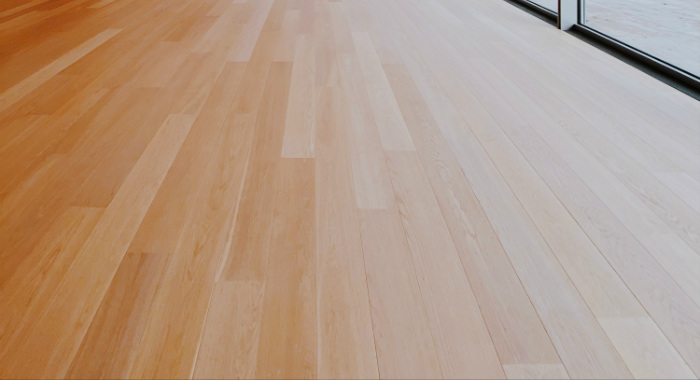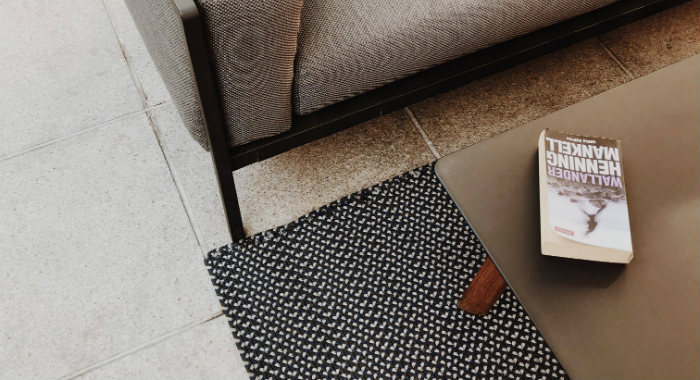If you’re buying a new property or looking to renovate, there are pros and cons for the different flooring types available.
Here, we take a look at some of them because quality flooring helps make your home a more pleasant place to spend time, though some owners will have trepidation about renovating their floor space.
So, in no particular order, let’s have a look at the various types of flooring available.
The pros of and cons of using carpet

Traditionally, every room in a Uk house was carpeted. In fact, even today most Uk home are predominantly carpeted. This is something that surprises many overseas guests who are used to laminate and tile floors throughout.
Personally, I love a good quality carpet under my feet, though it works much better in some rooms than others.
We have carpet in all of our bedrooms as it just feels much nicer when you get out of bed with bare feet to step onto a plush carpet rather than a hard, cold floor.
However, we always avoid using carpet in kitchens, bathrooms, and dining rooms since if they get wet they can start to smell or become stained easily.
Pros of installing carpet:
- They help reduce noise;
- Are an effective heat insulator;
- Deliver a cosy and warm feeling to the look and style of a home;
- Available in a wide range of budgets so you can get a style that is inexpensive to stretch between the walls.
Cons of installing carpet:
- They’re not always the most durable if they are used heavily, such as in entrance hallways;
- They are not the best surface when dealing with spills and stains, particularly if you have youngsters and toddlers in your home, so cleaning them should be a regular operation.
Usually, a carpet should be vacuumed at least once a week and for a pile carpet, the owners should opt for a deep clean every year. This will help prolong their life and prevent them from looking dirty and worn out.
The pros and cons of using laminate
One of the most popular flooring surfaces in UK homes in recent years has been the installation of laminate. There’s a very good reason for this and it’s because laminate flooring is a quality product at affordable pricing levels.

For those who would like a floor that appears to be made from quality real wood or stone, then laminate is for you. The product itself uses a high-quality image which is then glued onto a layer of composite wood to create the laminate.
We’ve installed laminate in most of our homes and it’s a long-lasting easy-to-maintain solution. It’s also not too difficult to install as a DIY job either, something we’ve done several times, including in the home office of our previous home.
It works for ground floor rooms, in particular, where noise in rooms below isn’t a concern. We have found, though, that investing in some good quality rugs can help to make it feel more luxurious under foot.
Pros of using laminate flooring
- Installing laminate is much cheaper and durable then installing real hardwood or stone floors;
- Easy to fit since the laminate flooring simply clicks together so you don’t have to hire professionals as you would do for installing a wooden floor;
- You can recreate the elegant look of stone quite easily and it is a good choice for those homes with pets and children that can be easily cleaned with stains and spills resolved with by a damp mop;
- And because of the materials used, laminate is a tough, hard-wearing choice that is resistant to dents, scratches and heavy knocks.
The cons of installing laminate flooring
- Some may find laminate floors fairly cold in winter and quite hard underfoot;
- There may also be issues with humidity, but regular care of your floor will deliver a long life.
The other issue for those interested in fitting laminate floors is that the cheaper products do look fairly cheap, so it’s worth spending slightly more – especially if it will be installed in a busy part of your home such as a hallway.
The pros and cons of installing vinyl flooring
Vinyl flooring has been a popular choice in the UK’s homes for many years, particularly in kitchens and bathrooms, and is often a cost-effective choice.

However, vinyl has been developed in recent years with particular advances in the patterns and bright colours and you can buy vinyl that resembles wood. It’s also possible to buy vinyl tiles and sheets, depending on your needs.
In our previous home, the kitchen floor used vinyl tiles, but it was designed to look like stone tiles. It was only when you felt the floor or looked closely that you could see it wasn’t actually stone.
We found these vinyl tiles looked much better and wore much better than normal vinyl flooring which often looks cheap and one dimensional.
However, we would urge you to ensure any moving furniture (such as chairs) have protective pads placed where they contact the floor. Our vinyl flooring started to get scratched and worn from our unprotected chairs being moved around a lot.
The pros of installing vinyl
- Along with being easy to clean, vinyl flooring resists water and will remain warm in winter;
- It’s a hard surface to damage and difficult to stain – a mop should deal easily with any spills.
Depending on the vinyl you choose, a quality vinyl floor covering can deal easily with heavy use and delivers good floor surface option that can last many years.
The cons of installing vinyl
While vinyl will meet the needs of most people, you may find it difficult repairing a small section that has been damaged and to maintain its appearance, you may need to replace the entire floor.
Vinyl tiles can help get around this issue but it is more expensive.
In either case, be sure to protect the floor from any furniture that will be moved.
The other options for floor surfaces in your home
We mentioned some of the more popular choices when it comes to covering a floor in your home and here’s a rundown of some of the other potential ideas for you.
Rubber flooring
This offers a textured finish and is a child-friendly option that is hygienic, warm underfoot and shock absorbent. Available in bright bold patterns, it’s an ideal choice for family bathrooms and kitchens.
You will need to appreciate that the surface can become slippery when it’s wet, so you should opt for a textured finish and many manufacturers will offer a high slip resistance rating.
There’s also an issue if it becomes damaged because rubber flooring comes as either a single sheet or a tile which is easily replaced, but the sheet may need to be replaced entirely.
Rubber flooring can work particularly well in rooms you want to use as a home gym as they’ll help to provide cushioning when placing down heavy weights and equipment.
Engineered wood flooring
Growing in popularity, engineered wood consists of several layers. The top surface will be a wear layer – this layer will be of higher quality to protect the wood.
This sits above other layers of either plywood or wood and arranged at right angles. It can be pricey for quality engineered wood flooring but it looks attractive and is a great choice for family homes.
Be aware with engineered wood flooring that you cannot leave wet towels or mats on the surface and any water should be mopped up immediately. Spillages that are left unattended will spoil the surface.
We had engineered wood flooring in the living room of one of the properties we owned and it was great. It looked like a solid wood floor but had many of the benefits of laminate flooring in that it was easier to maintain.
It could also be sanded down and stained when needed too, though it’s worth keeping track of how often you do this as there is a maximum recommended amount.

Stone flooring
Stone flooring remains a popular choice in homes today since the stone tiles deliver an attractive finish and there’s a wide range of options available.
The cons of stone flooring include the fact that since natural stone can be a porous product, it is probably best to consider limestone or marble tiles.
However, it’s always worth checking to see whether the stone flooring has been treated with a protective sealant to help protect it from wear and water issues.
We have stone flooring in the kitchen of our current home and it looks lovely. It is cold though and we don’t like to walk on it without shoes or slippers on as a result.
While it’s very hard wearing, our cat did manage to damage it when she knocked a marble bookend off our shelf onto the floor. However, even then, the damage was just a small chip that’s barely noticeable.
If you do go for stone, we’d recommend going for a natural looking pattern rather than anything too plain. This way, any dirty marks or damage won’t show up as easily.
Ceramic tiles and porcelain
We’ve added these under one heading though they are not the same material. Porcelain consists of dense clay that has been fired for longer and at a much higher temperature than ceramic tiles so it is a less porous and hardy material to work with.
For ceramic tiles, the colour and pattern are usually fired as the surface layer where porcelain tiles will be coloured throughout. The tiles tend to be lightweight and will be uniform in size and are easy to work with.
They’re not only easy to clean, but also resistant to stains and are impervious to water. They are obviously very hard wearing and will deliver years of use even in a busy household.
The cons of porcelain and ceramic tile: be aware that highly polished porcelain can be slippery when wet so are not the best choice for bathrooms.
However, we had porcelain tiles in the bathroom of our previous house and never found this to an issue providing we always used a bath mat.
It was, however, extremely difficult to drill holes in the porcelain wall tiles – even when using a specialist porcelain drill bit so keep this in mind if you’ll need to attach any fixture and fittings to the tiles!
Ultimately, when it comes to the pros and cons of the different flooring types, you will want to be meeting your budget requirements and also the aesthetics of how you want your home to look.
The ongoing maintenance of your chosen surface should also be a consideration, but the bottom line is to balance any design or redecoration ideas with the impact that a striking looking floor will bring to the project.




